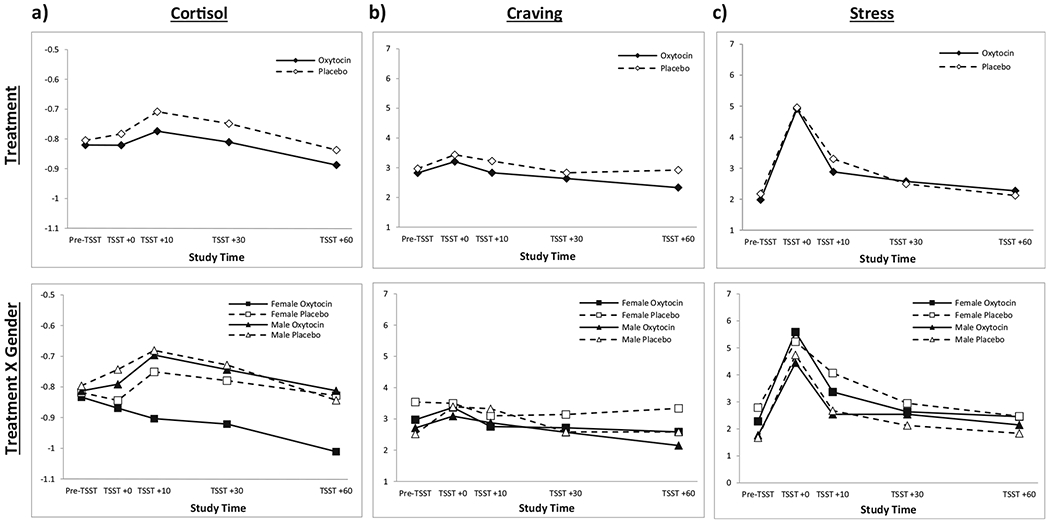Fig. 1.

Physiological and subjective response to Trier Social Stress Task (TSST). a Significant increase in initial cortisol response from pre-TSST to TSST + 10 (t95 = 2.6; p = 0.012), driven by elevated response in placebo group (β = 0.10, SEM = 0.04; t95 = 2.45; p = 0.016) and attenuated response in OXY group (β = 0.05, SEM = 0.04; t95 = 1.20; p = 0.23). No significant treatment × time interaction for the complete response profile (F4,95 = 0.22; p = 0.92). Treatment × time × gender interaction was significant (F4,93 = 2.50; p = 0.048) with female OXY participants having a blunted cortisol response compared to the other groups. b No significant effect of OXY on initial craving response to the TSST (OXY: β = 0.38, SEM = 0.33; t109 = 1.14; p = 0.26; placebo: β = 0.46, SEM = 0.33; t109 = 1.39; p = 0.17) or on post-TSST response profile (F4,109 = 0.79; p = 0.53). Treatment × gender interaction was also not significant (F4,107 = 0.39; p = 0.82). c Initial stress response to the TSST was significant in both the OXY- and placebo-treated participants (oxytocin: β = 2.9, SEM = 0.0.5; t109 = 6.35; p < 0.001; placebo: β =2.8, SEM = 0.5; t109 = 6.04; p < 0.001). No significant effect of OXY on the post-TSST stress response profile (treatment × time, F4,109 = 0.69; p = 0.60). Significant main effect of gender on stress response (F1,108 = 6.05; p = 0.016) such that women had greater stress response, but no interaction of gender × treatment (F4,107 = 0.54; p = 0.70)
